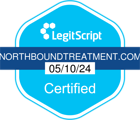The older antipsychotic medications are notorious for their side effects. Here is a description of the older antipsychotics used in treatment:
Phenothiazines is the name of the largest of the five main classes of typical antipsychotic drugs. There are three groups in the Phenothiazine class of antipsychotics: Aliphatic Compounds, Piperidines, and Piperazines.
Among the Aliphatic Compounds there is the familiar drug Chlorpromarzine, more commonly known as Thorazine (Half Life=16-30 hours). Thorazine is known for its side effects and strong sedative effects. Another strong drug underneath the Aliphatic Compound umbrella is Methotrimeprazine, more commonly known as Nozinan (Half Life=15-30 hours). Nozinan has extremely strong sedative effects.
Then there are the Piperidines: Mesoridazine and Thioridazine. These two are more commonly known as Serentil and Mellaril.
Finally there are the Piperazines: Fluphenazine, Perphenazine, Flupentixol, and Trifluoperazine. The biggest problem with the Piperazines is their strong extrapyramidal side effects.
A class of notoriously potent typical antipsychotic drugs called Butyrophenones are only used in extreme situations and sometimes as an analgesic anesthesia because they are so sedating. The most widely used medication in this class of antipsychotics is Haldol (Haloperidol). This drug is 50 times more potent than thorazine! And then there is Benperidol which is 200 times more potent than thorazine! Benperidol is most commonly used to treat hypersexual behavior and is sometimes prescribed to sex offenders as a condition of their parole.
While the above mentioned drugs are rarely, if ever used in drug rehabs or addiction treatment, they are still sometimes used in psychiatric settings. These drugs cause side effects that often give psychiatric hospitals a bad name and poor image because they are so powerful. In the movies, when psychiatric hospitals are portrayed as evil institutions and you see orderlies holding down patients and injecting them with something, it is one of the above mentioned drugs. These are rarely used these days and as mentioned in previous blogs, there are newer atypical antipsychotics that do not have as many horrific side effects.
Author
-

President, CEO & Founder at Northbound Treatment Network
Paul Alexander is the CEO, President & Founder of Northbound Treatment Network in Newport Beach, California. He believes wholeheartedly in transformational leadership, organizational health and effective, fully integrated substance use disorder and mental health treatment. With over 27 years of experience in behavioral healthcare, Paul has extensive knowledge of “in vivo” treatment modalities, clinical development, operations, strategy, marketing and financial planning. He has been widely recognized for his development of collegiate-based residential treatment programs for students in recovery and authored a research study at The University of California confirming this modality’s effectiveness.
Paul’s comprehensive professional experience, willingness to innovate, and emphasis on organizational health are vital factors in Northbound’s continued success. Paul received his Certified Addiction Treatment Specialist training at Saddleback College in Mission Viejo, CA, and was awarded Outstanding Alumni Service Award in 2002. Paul holds a Bachelor of Arts degree in Criminology, Law and Society, Summa Cum Laude, from University of California, Irvine, and a Juris Doctorate degree from Loyola Law School of Los Angeles. Paul currently serves on The National Association of Addiction Treatment Providers (NAATP) board. In addition, he serves on The Family Recovery Foundation board and The CarePossible board in Orange County; both organizations are committed to raising funds for family recovery and treatment for former military personnel. Paul is in recovery himself and lives in Orange County with his wife Silvana and his two young sons, Noah and Dean.










